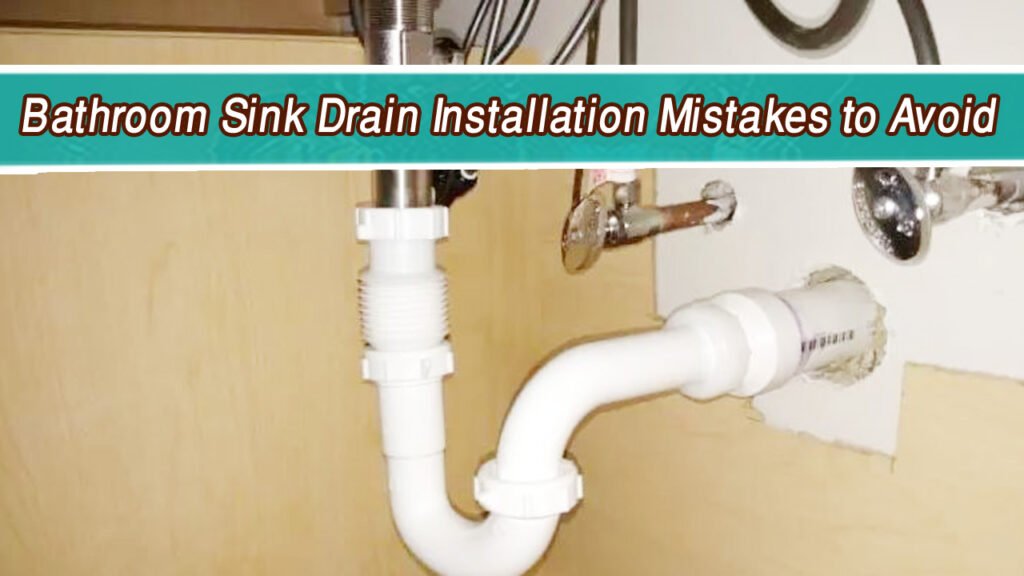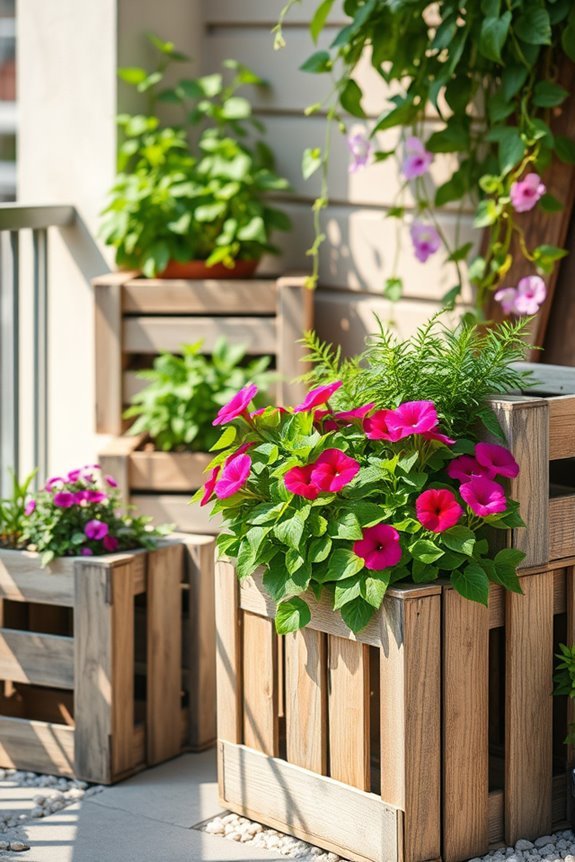Bathroom Sink Drain Installation Mistakes to Avoid
Ever had a clogged bathroom sink drain? It’s a common problem that can be avoided with the right installation. As a homeowner, knowing the mistakes that cause drainage issues is key.
If you’re doing it yourself or hiring a pro, understanding the basics and how to install them correctly is essential. This way, your bathroom sink drain will work well and keep water flowing smoothly.

What are the most important things to think about when installing a bathroom sink drain? Check out this detailed guide to learn about common mistakes and how to fix them.
Image by plumbersingapore
Key Takeaways
- Understand the basic components and functions of a bathroom sink drain assembly
- Avoid choosing the wrong drain size or type for your sink
- Steer clear of common installation oversights that can lead to leaks and clogs
- Ensure proper P-trap installation and positioning for optimal drainage
- Master the techniques for creating a watertight seal around the drain
- Maintain the correct drain slope and alignment for efficient water flow
- Properly integrate the drain vent system to prevent siphoning and backflow
Basic Bathroom Sink Drain Components
Installing a bathroom sink drain right is key for a working and lasting system. Knowing the main parts of a drain is vital. Let’s explore the essential components, their roles, and the different drain setups you might see.
Essential Parts and Their Functions
The drain flange is at the heart of a bathroom sink drain. It’s where water flows into the drain. The tailpiece, a vertical pipe, carries water down to the P-trap.
The P-trap is a curved pipe that keeps a water seal. This prevents sewer gases from getting into the bathroom.
Types of Drain Assemblies
- Pop-up drain assembly: This type has a lift rod that opens and closes the drain.
- Grid strainer drain assembly: It uses a removable grid to catch big debris before it goes down the drain.
Tools Required for Installation
Installing a bathroom sink drain needs specific tools. You’ll need a basin wrench, plumber’s putty, plumber’s tape, and the right drain pipe. It’s important to use the right drain materials and pipe size. This avoids common mistakes like incorrect drain pipe size or wrong drain materials.
| Tool | Purpose |
|---|---|
| Basin Wrench | Tightens the drain flange and attachments under the sink |
| Plumber’s Putty | Creates a watertight seal between the drain flange and sink |
| Plumber’s Tape | Seals threaded connections to prevent leaks |
| Correct Drain Pipe Size | Ensures proper drainage and prevents clogging |
Here’s another post you might find useful: How to Plumb a Shallow Well Pump?
Choosing the Wrong Drain Size and Type
Choosing the wrong drain size or type is a common mistake in bathroom sink installations. This mistake can cause clogged drain pipes and leaky drain connections.
To avoid these problems, measure the drain opening carefully. Pick a replacement that fits perfectly. Using the wrong size can lead to leaks and water damage. It can also cause slow drainage and frequent clogs.
- Measure the existing drain opening to ensure a proper fit for the replacement.
- Consider the material and design of the drain assembly, as different types may have varying connection methods or flow rates.
- Consult with a plumbing professional if you’re unsure about the appropriate drain size or type for your bathroom sink.
Choosing the right drain components can prevent leaks, clogs, and other plumbing issues. A little care during installation can save you a lot of trouble later.
Don’t miss out on related tips: Read this next: How to fix a broken PVC drain pipe
Bathroom Sink Drain Installation Mistakes to Avoid
When installing a bathroom sink drain, every detail matters. Small mistakes can cause big problems, like leaks and poor sealing. As a pro plumber, I’ve seen many mistakes. Here are some common ones to avoid.
Common Installation Oversights
One big mistake is not aligning the drain right. If it’s off-center or not level, you’ll get leaks. Another error is using the wrong materials. This can make the installation fail early.
Professional Installation Tips
- Measure and mark the sink drain spot carefully for the right alignment.
- Choose high-quality, right-fit drain parts for your sink and plumbing.
- Put a lot of plumber’s putty around the drain flange for a tight seal.
- Tighten connections well, but don’t overdo it to avoid damage.
Safety Considerations
Always put safety first when working on plumbing. Turn off the water supply and wear gloves and safety glasses. Also, keep the area clean and well-lit to avoid accidents.
Following these tips can help you avoid common mistakes. This ensures a good, lasting installation. A well-done drain makes your bathroom work better and keeps your home’s plumbing safe.
Don’t miss out on related tips: Read this next: Why Do We Need Bottle Traps for Wash Basins?
Improper P-Trap Installation and Positioning
The P-trap is key in bathroom sink drain setups. It stops sewer gases from getting in. But, if it’s not installed right, you might face clogged drain pipes, improper drain slope, and leaky drain connections.
The P-trap keeps water in the bend to block bad smells. But, if it’s not in the right spot, it can mess up water flow. This might cause slow drains or even backflow. Also, a bad P-trap installation can lead to clogged drain pipes and water that doesn’t move.
To make sure your bathroom sink drain works well, pay attention to the P-trap’s placement. Here are some tips to avoid common mistakes:
- Put the P-trap right under the sink’s drain opening for a straight connection.
- Keep a drain slope of at least 1/4 inch per foot for good water flow.
- Make sure all connections are tight to avoid leaky drain connections and keep a seal.
- Check that the P-trap is level and at the right height, not too high or too low.
By following these tips, you can avoid common P-trap installation mistakes. This way, your bathroom sink drain will work smoothly for a long time.
| Common P-Trap Installation Issues | Potential Consequences |
|---|---|
| Incorrect positioning | Disrupted water flow, clogged drain pipes |
| Improper slope | Improper drain slope, water stagnation |
| Loose or leaky connections | Leaky drain connections, sewer gas leaks |
| Incorrect height | Impaired accessibility, drainage issues |
Poor Sealing Techniques and Their Consequences
Proper sealing is key for bathroom sink drain installation. Skipping this step can cause big problems, like leaks. As a pro plumber, I’ve seen these issues up close. I’m here to share tips to help you avoid them.
Proper Plumber’s Putty Application
Plumber’s putty is a common sealant for bathroom sinks. But, it must be applied correctly. Too much can make a mess, while too little leads to leaks. The goal is to use just the right amount for a tight seal.
Silicone Sealant Best Practices
Silicone sealant is also popular for bathroom sink drains. When used right, it creates a waterproof barrier. But, mistakes like using the wrong silicone or not preparing the surface can cause leaks. Always follow the manufacturer’s instructions and use high-quality silicone for the best results.
Regular maintenance and checks are crucial for your sink drain. Watching for signs of leaks or poor sealing helps catch problems early. This prevents water damage and keeps your plumbing working well for years.
Incorrect Drain Slope and Alignment Issues
The slope and alignment of a bathroom sink drain are key to its function. An improper slope can cause clogs and standing water, perfect for mold and mildew. It’s vital to ensure the correct slope for efficient water flow and to avoid these problems.
The ideal drain slope is about 1/4 inch per foot. This slope helps water flow smoothly down the drain. Without it, water can pool, looking bad and posing health risks.
- Improper drain slope can lead to clogged drain pipes and standing water
- The ideal drain slope is approximately 1/4 inch per foot, allowing gravity to guide water effectively
- Inadequate slope causes water to pool, creating the perfect environment for mold and mildew growth
Alignment of the drain is also important. If it’s not aligned right, water flow can be uneven and leaks may occur. Making sure the drain is centered and level is essential. Getting the slope and alignment right helps avoid common problems and keeps your drain working well for years.
| Proper Drain Slope | Improper Drain Slope |
|---|---|
| 1/4 inch per foot downward incline | Less than 1/4 inch per foot, leading to standing water |
| Allows efficient water flow and prevents clogging | Causes water to pool, promoting mold and mildew growth |
| Ensures a well-functioning drain system | Increases the risk of drain clogs and maintenance issues |
Keeping the drain slope and alignment right is key to maintaining your bathroom sink drain. By following these tips and staying alert, you can prevent clogs and standing water. A bit of care can make a big difference in keeping your drain working well.
Drain Vent System Errors and Solutions
Proper venting is key but often ignored in bathroom sink drain setup. A good vent system is essential for smooth drainage. It helps avoid slow drains, gurgling sounds, and sewer smells. Yet, many people, including DIY fans, make mistakes that harm their sink’s drainage.
Importance of Proper Venting
The vent system lets air into the drain pipes. This prevents vacuum issues and ensures water flows well. Without a good vent system, you might face slow drains, gurgling, and sewer smells. Fixing these drain vent issues is vital for a healthy plumbing system.
Common Vent Installation Mistakes
- Failing to properly connect the vent pipe to the drain assembly
- Blocked drain vents caused by debris, improper venting angles, or incorrect pipe sizing
- Incorrect vent pipe routing, leading to clogged drain pipes
- Inadequate vent pipe diameter or length, resulting in insufficient air flow
- Incorrect vent pipe material or improper connections, causing leaks and air flow issues
To keep your drainage working well, a proper vent system is crucial. You might need a pro plumber to check and fix your vent system. They can make sure your bathroom sink drains efficiently.
Incompatible or Low-Quality Materials
Choosing the right materials for your bathroom sink drain is key. Using the wrong ones can cause problems like leaky drain connections and quick wear. As a professional plumber, I’ve seen these issues firsthand. They’re definitely not something you want to face.
One common mistake is picking the wrong drain materials. People often choose the cheapest option without checking if it fits their plumbing system. This can lead to wrong drain materials that leak and cause water damage.
Another problem is not following drain maintenance tips. Even top-quality materials need regular care to work right. If you ignore cleaning and checking your drain, you might face clogs and backups. These issues can be both annoying and expensive to fix.
| Common Drain Material Issues | Potential Consequences |
|---|---|
| Using incompatible or low-quality components | Leaky drain connections, premature wear and tear |
| Neglecting regular drain maintenance tips | Clogs, backups, and other plumbing problems |
| Failure to select the right drain materials | Improper fit, leading to water damage |
To avoid these problems and have a reliable drain system, work with a skilled plumber. They can help pick the right materials and teach you about drain maintenance tips. Getting it right the first time can save you a lot of trouble and money later on.
Common Connection and Threading Mistakes
Connecting and threading your bathroom sink drain right is key to avoiding leaks. Many people, even pros, often miss these details. This can lead to big problems later. Here, we’ll look at common mistakes and how to fix them to keep your drain working well.
Thread Sealing Methods
Sealing threaded connections is a must in drain installation. Without it, you might face leaks and water damage. Teflon tape and pipe dope are top choices for sealing. Teflon tape fills gaps between threads for a tight seal. Pipe dope works similarly but is thicker.
Together, they make a strong seal that stops leaks.
Proper Tightening Techniques
Not tightening correctly can also cause leaks. Too tight can damage the threads, while too loose doesn’t seal well. The goal is to find the right amount of tightness.
Start by tightening by hand, then add a quarter-turn with tools. Always check for damage or signs of wear. This could mean you need to replace parts.
Learning how to seal threads and tighten correctly will keep your drain connections tight and leak-free. Regular checks for looseness or wear can also help keep your drain system in good shape.
FAQ
What are the most common bathroom sink drain installation mistakes to avoid?
Common mistakes include picking the wrong drain size or type. Also, not getting the slope and alignment right. Using poor sealing techniques and wrong P-trap installation are also errors. Lastly, using low-quality materials is a big no-no.
Why is it important to choose the right drain size and type for my bathroom sink?
Choosing the right drain size and type is key. It prevents clogs, leaks, and poor drainage. The wrong size can cause slow draining, standing water, and sewer smells.
How can I ensure a proper and leak-free drain installation?
For a leak-free drain, follow professional tips. Use the right sealing methods and tighten correctly. Also, keep the drain slope and alignment just right.
What is the importance of a properly functioning drain vent system?
A good drain vent system ensures water flows well. It prevents slow draining, gurgling, and sewer smells. Mistakes in vent installation can cause clogs and drainage issues.
How can I avoid using incompatible or low-quality materials for my bathroom sink drain installation?
Always use high-quality, compatible materials for a lasting drain system. The wrong materials can lead to leaks, wear, and maintenance headaches. Choose materials made for bathroom sink drains.



